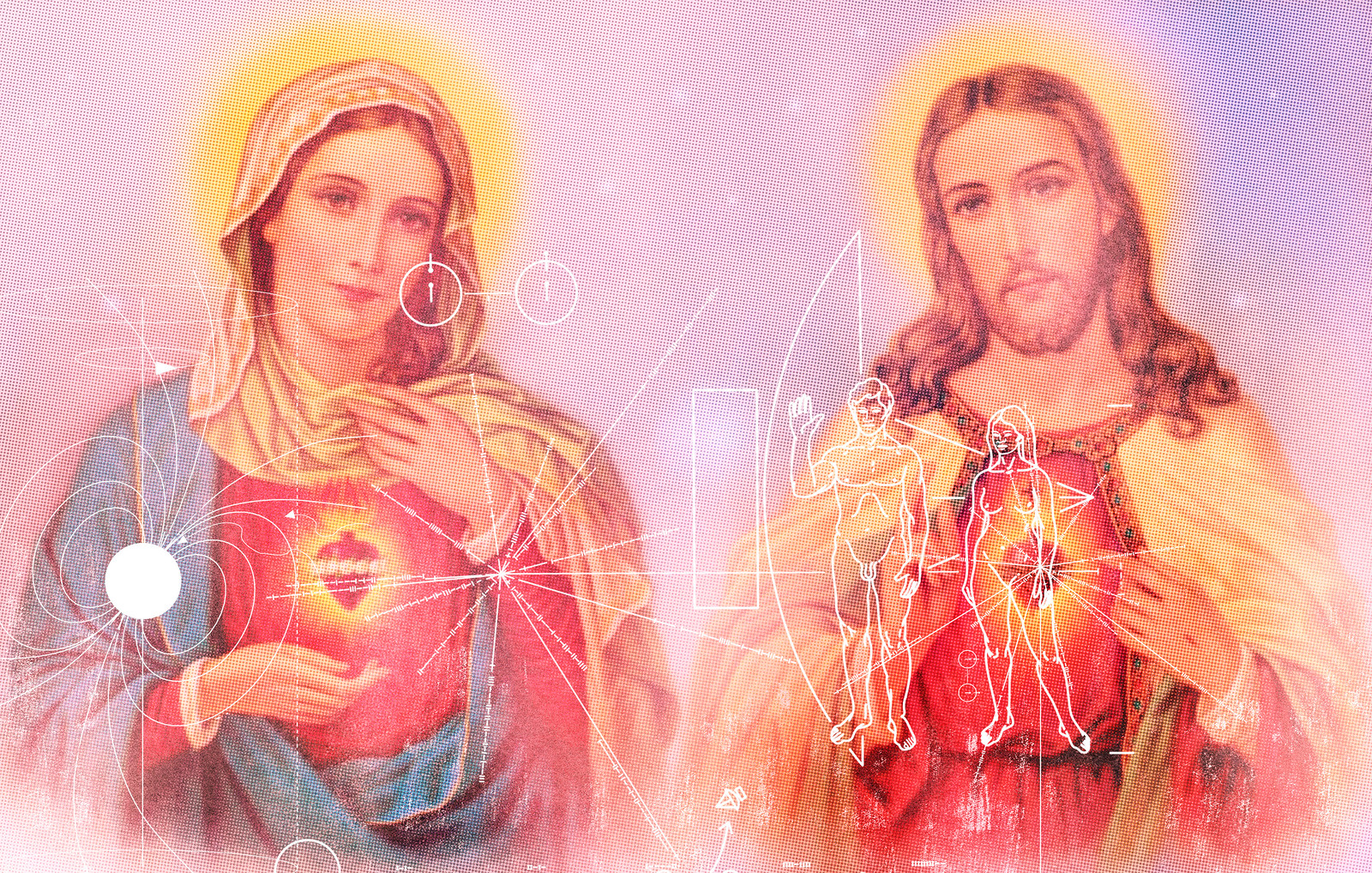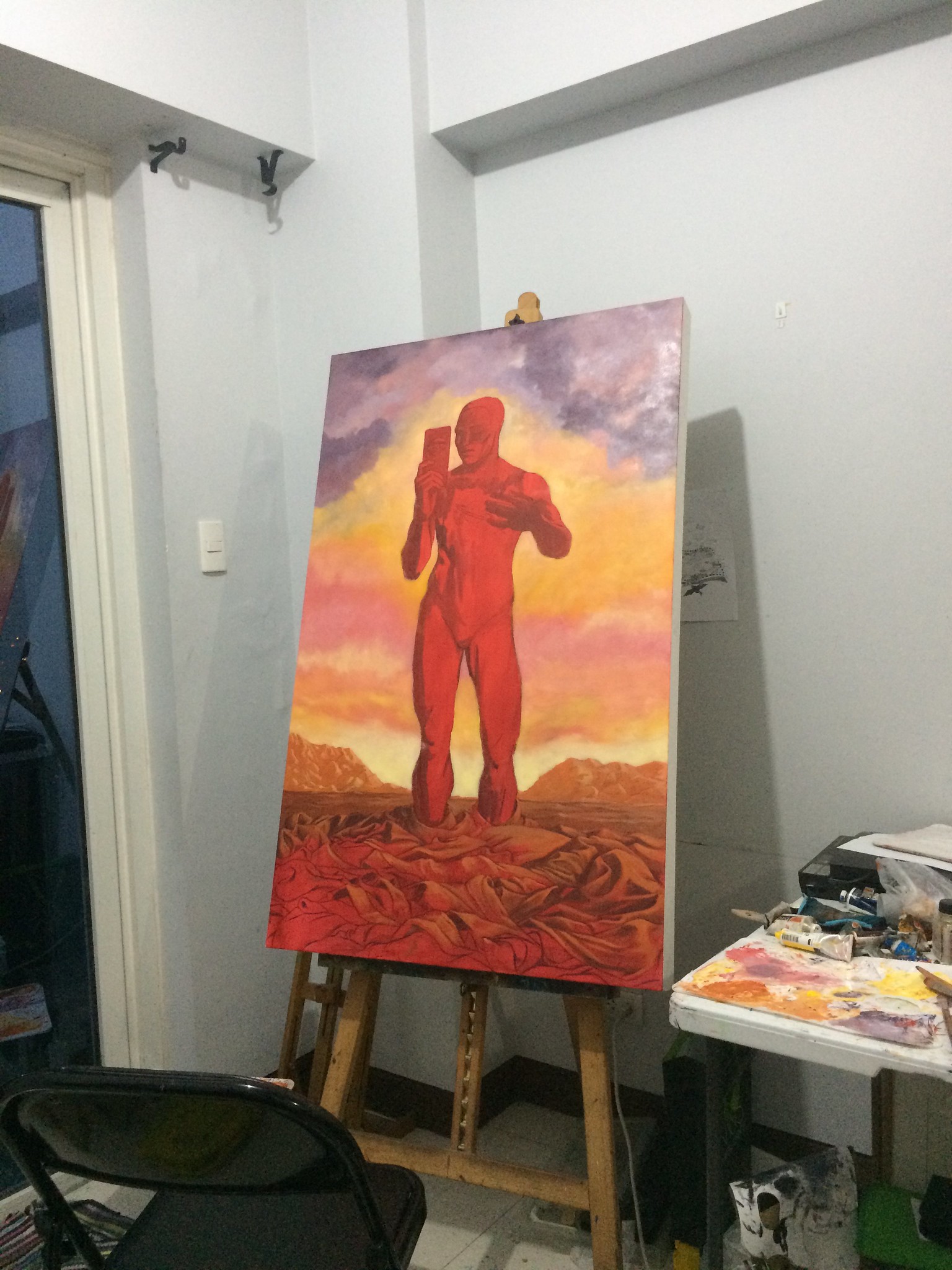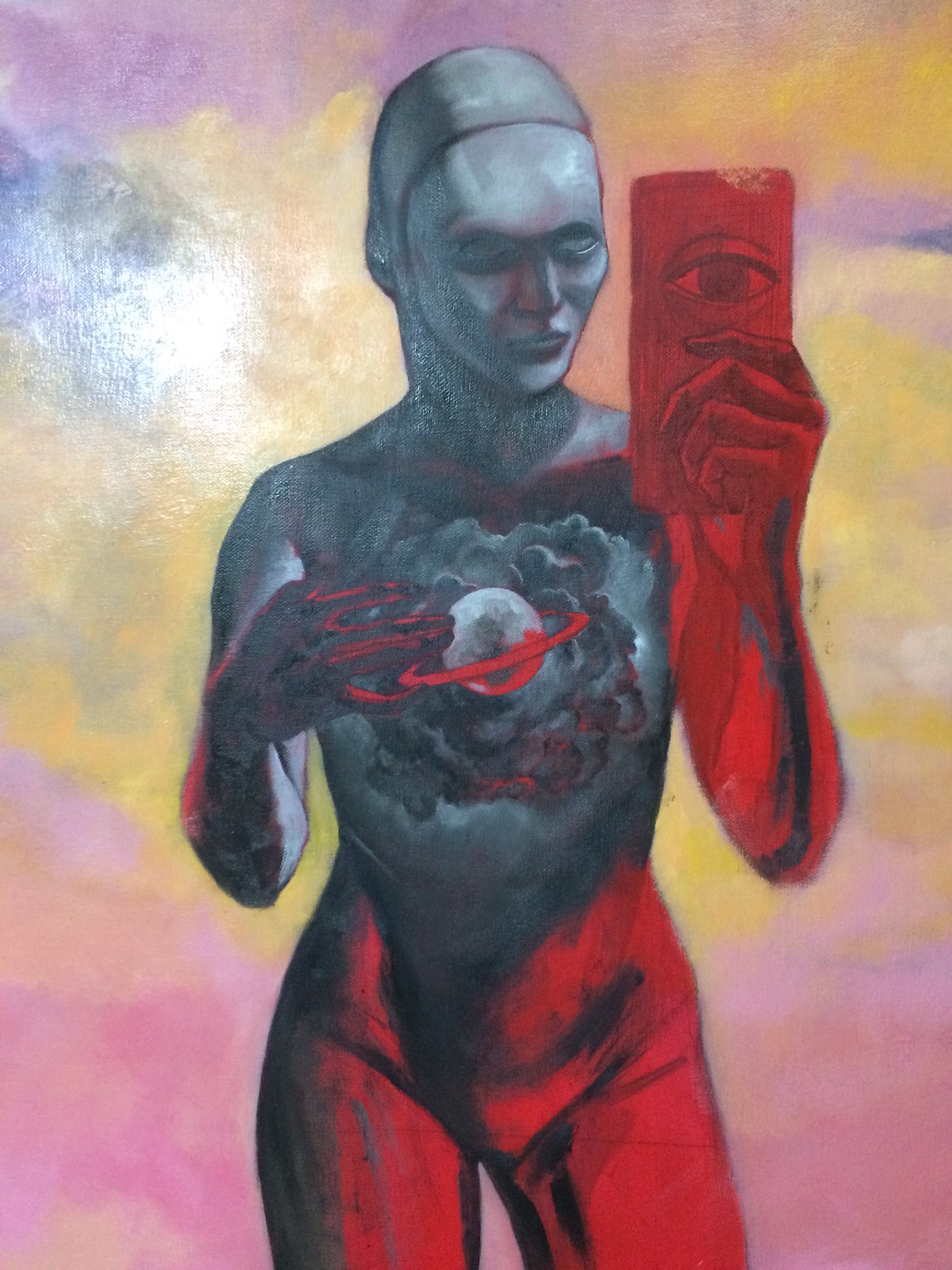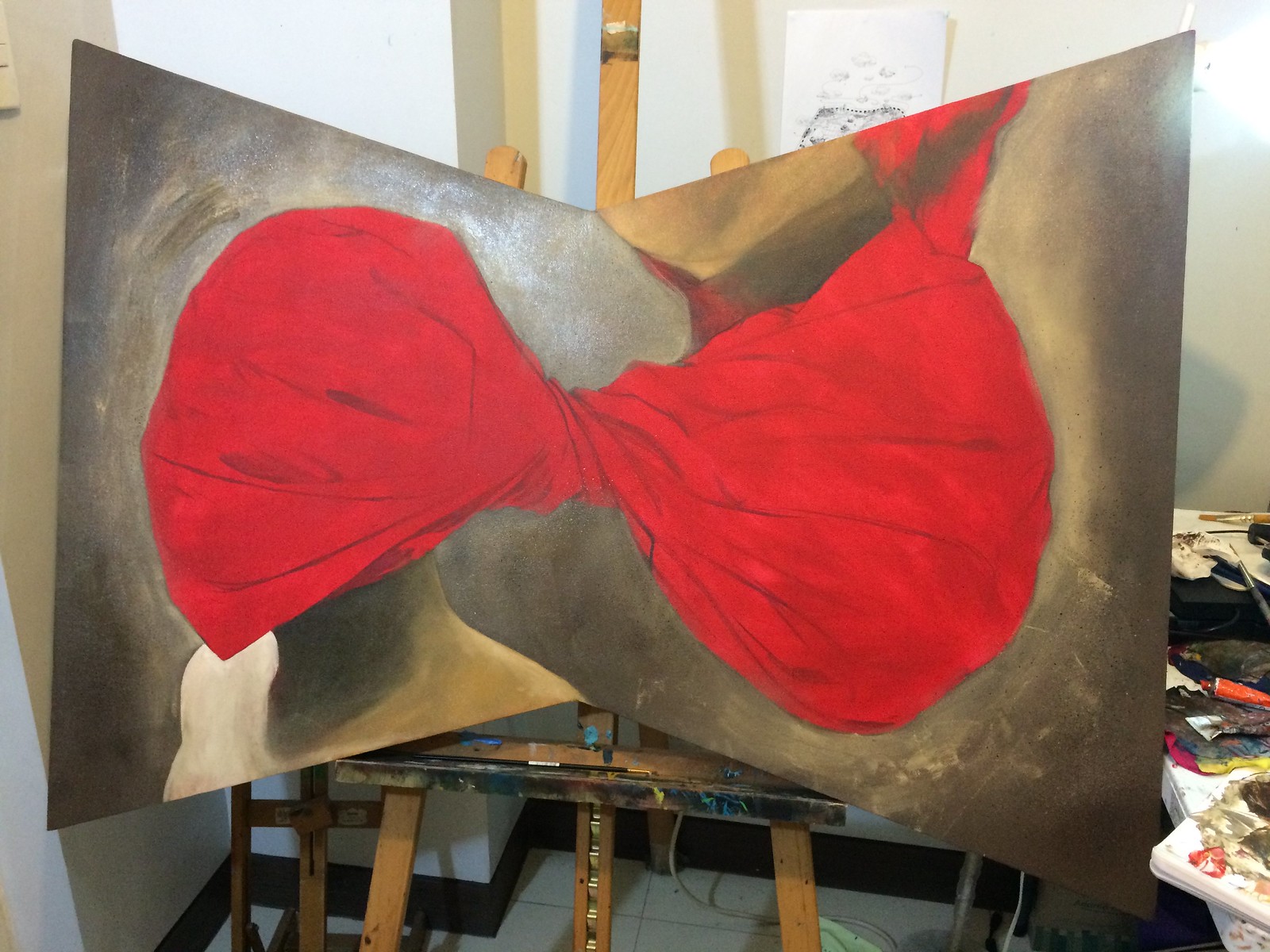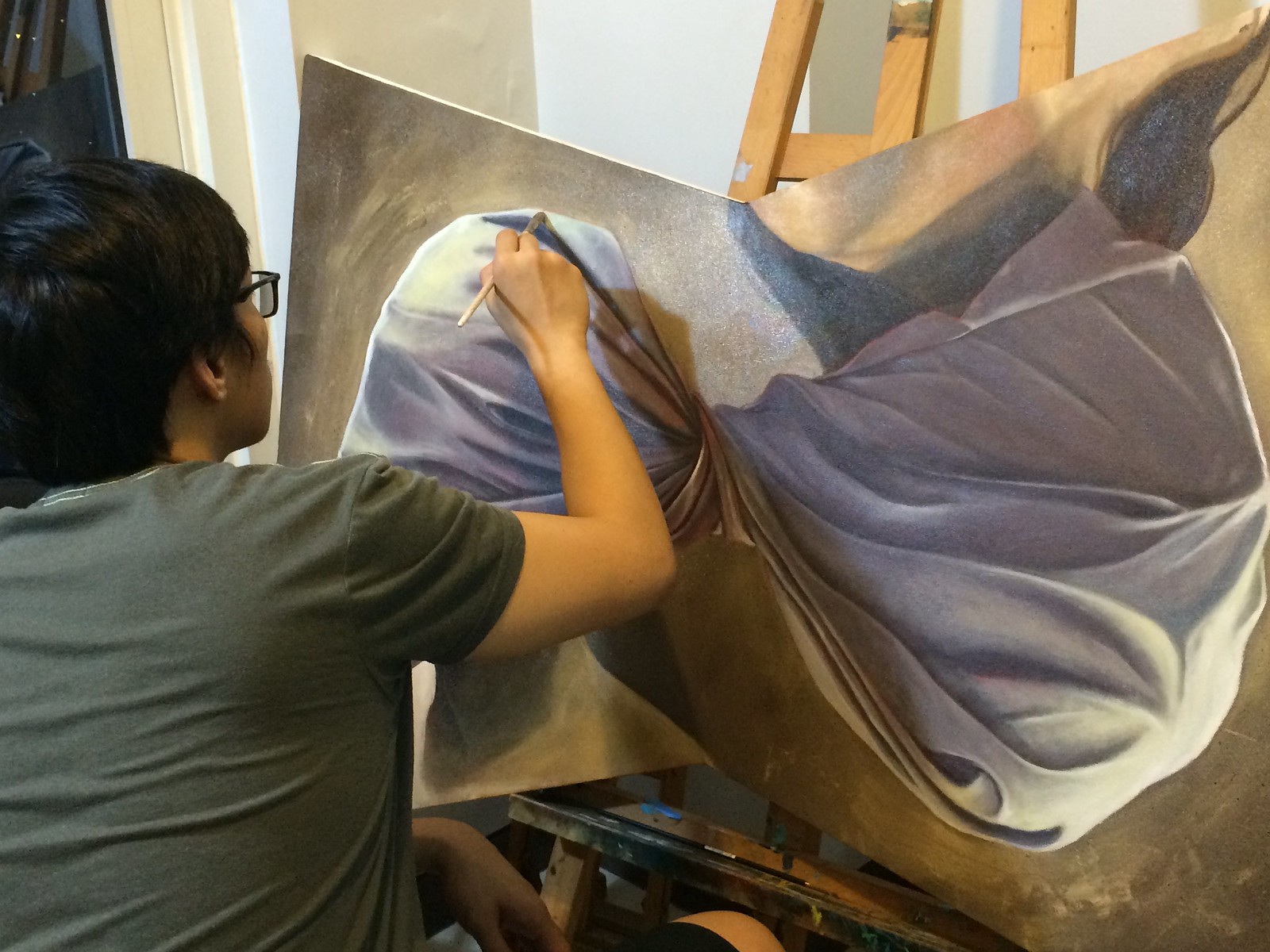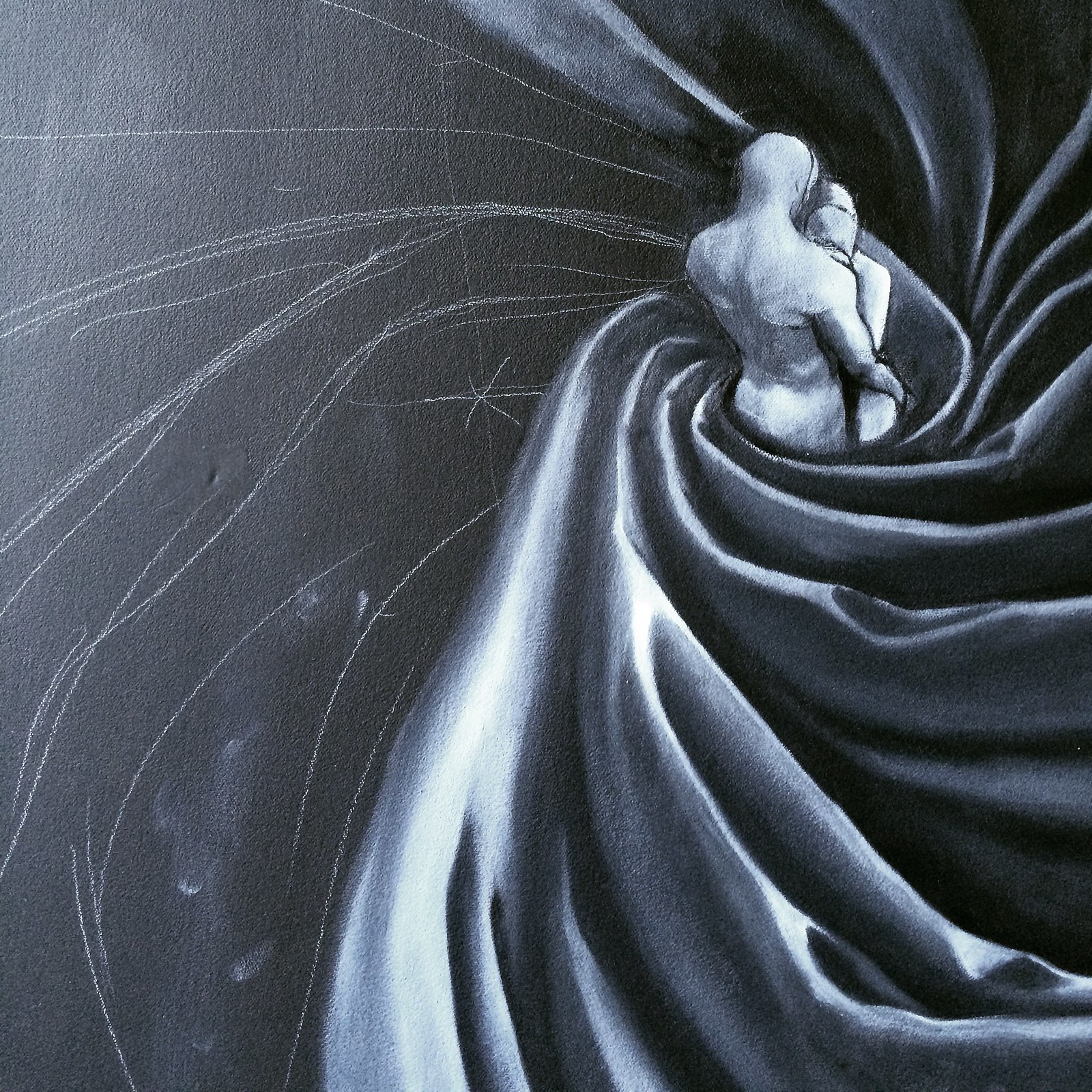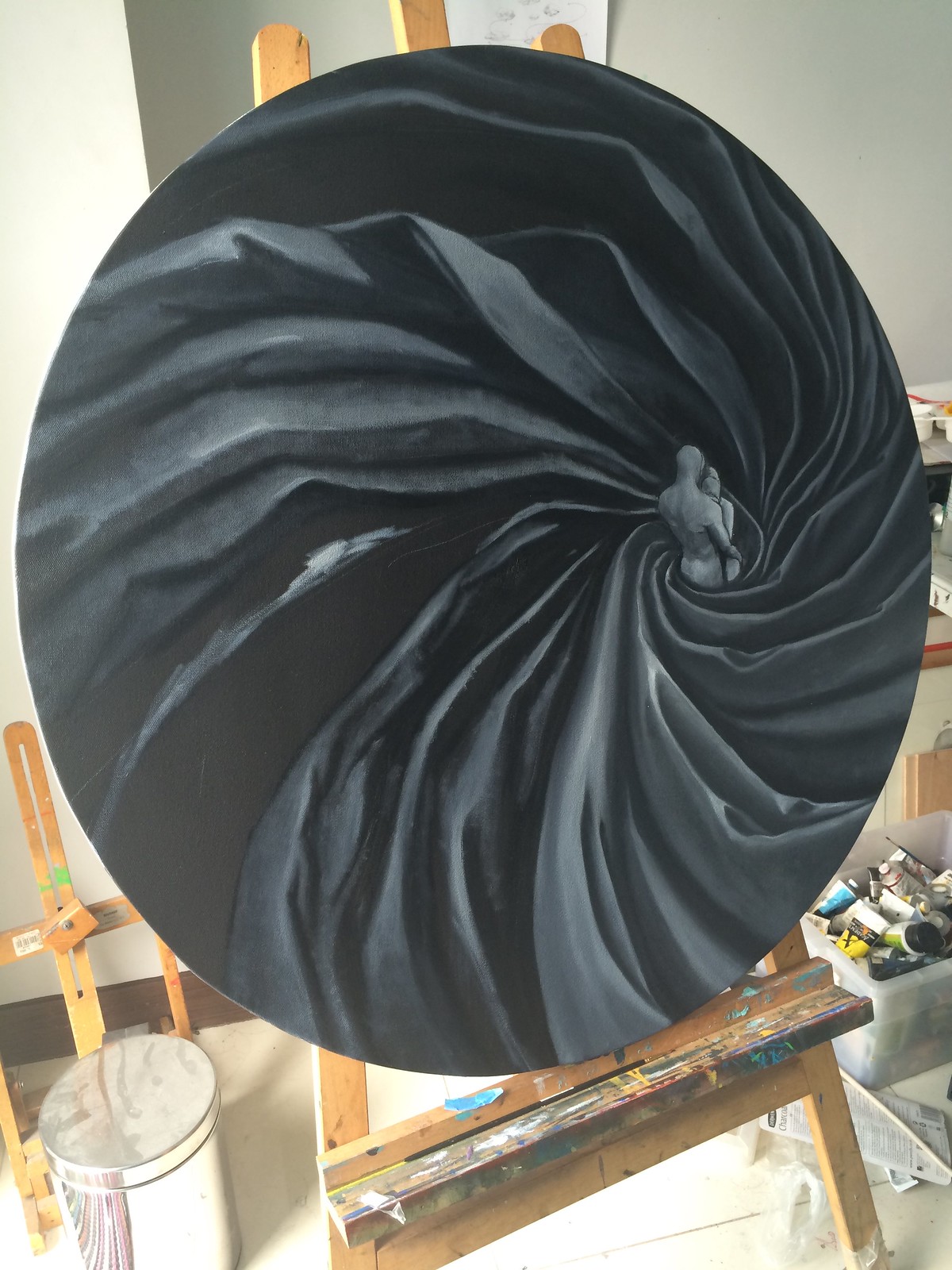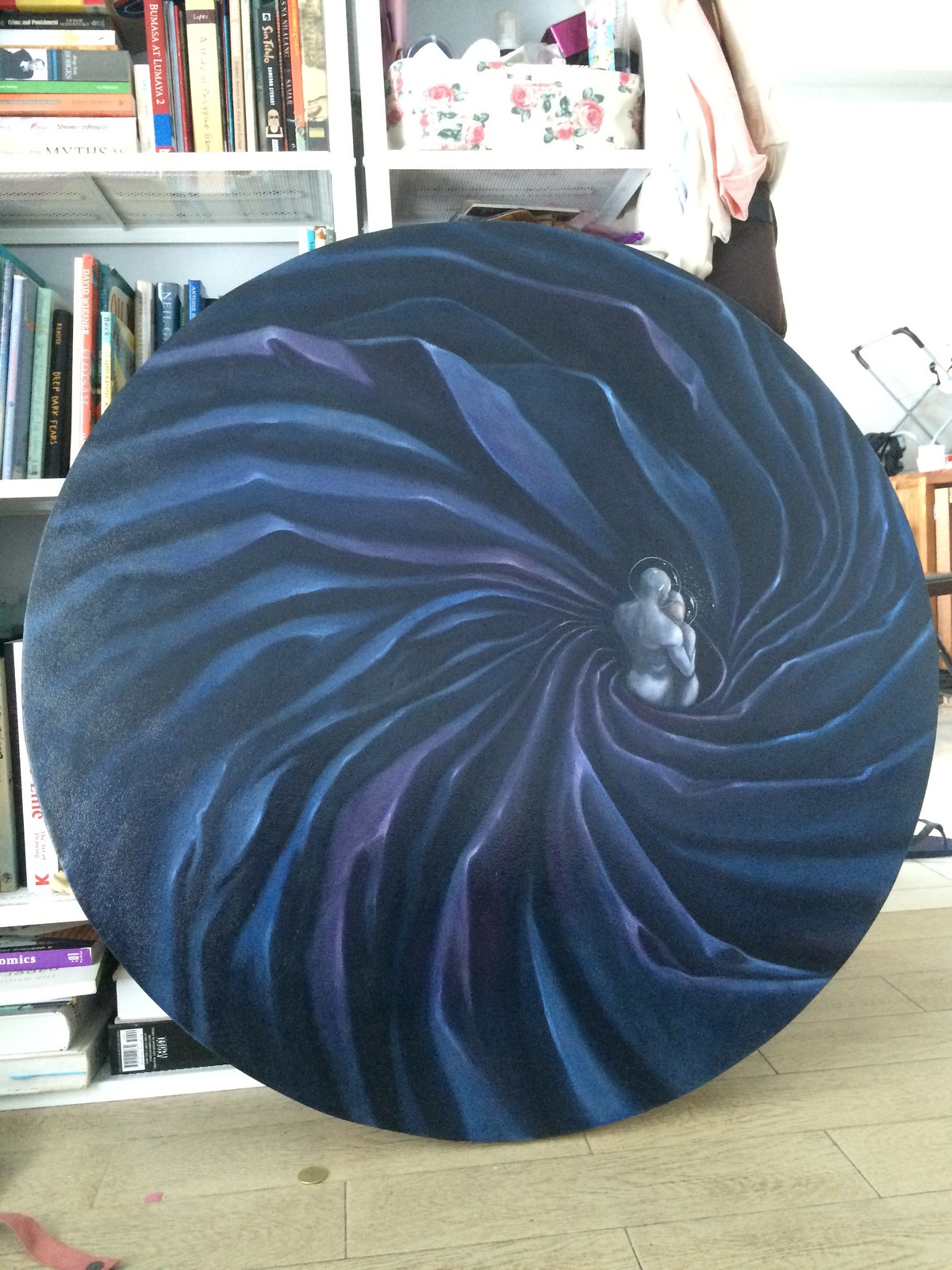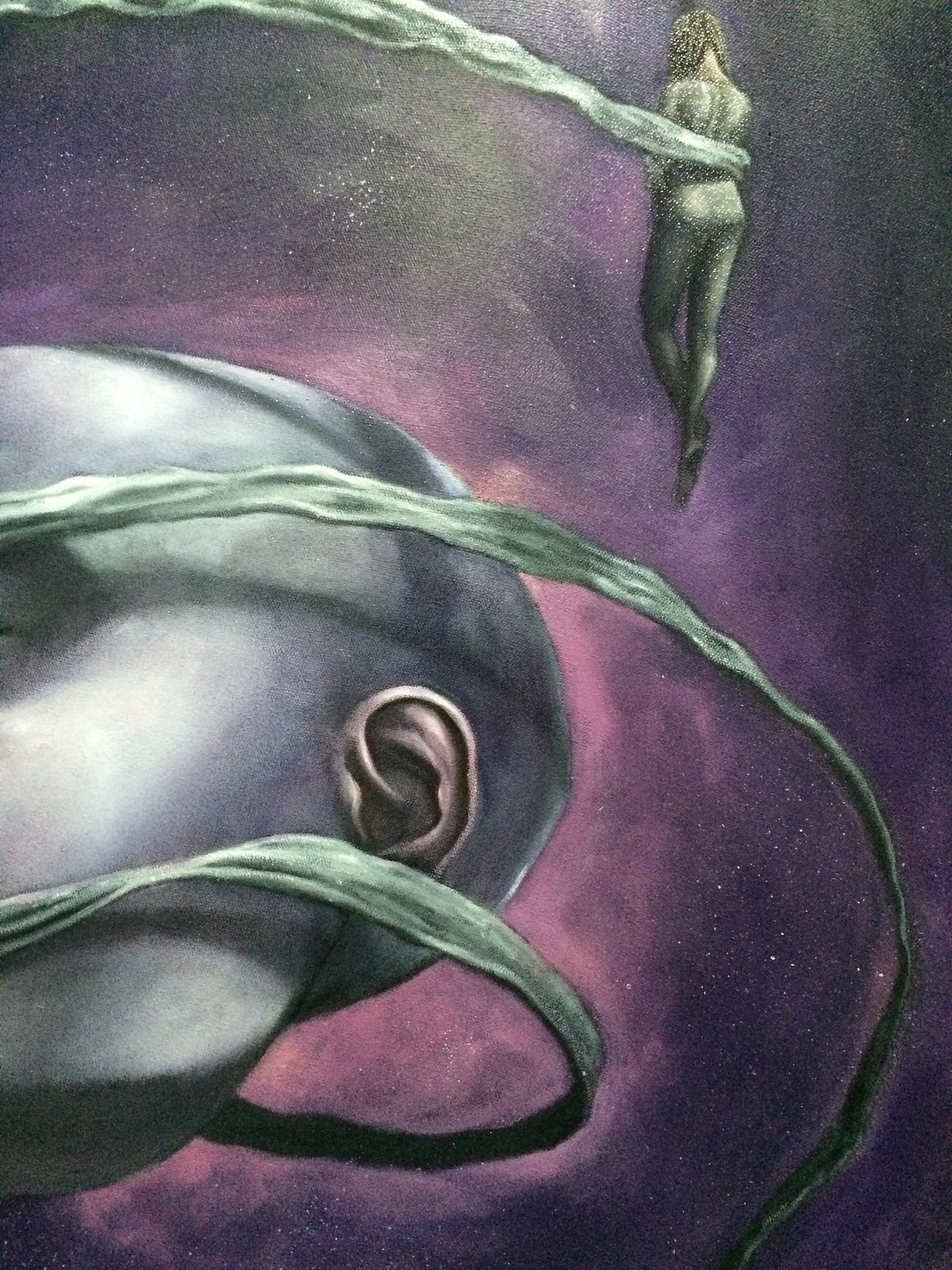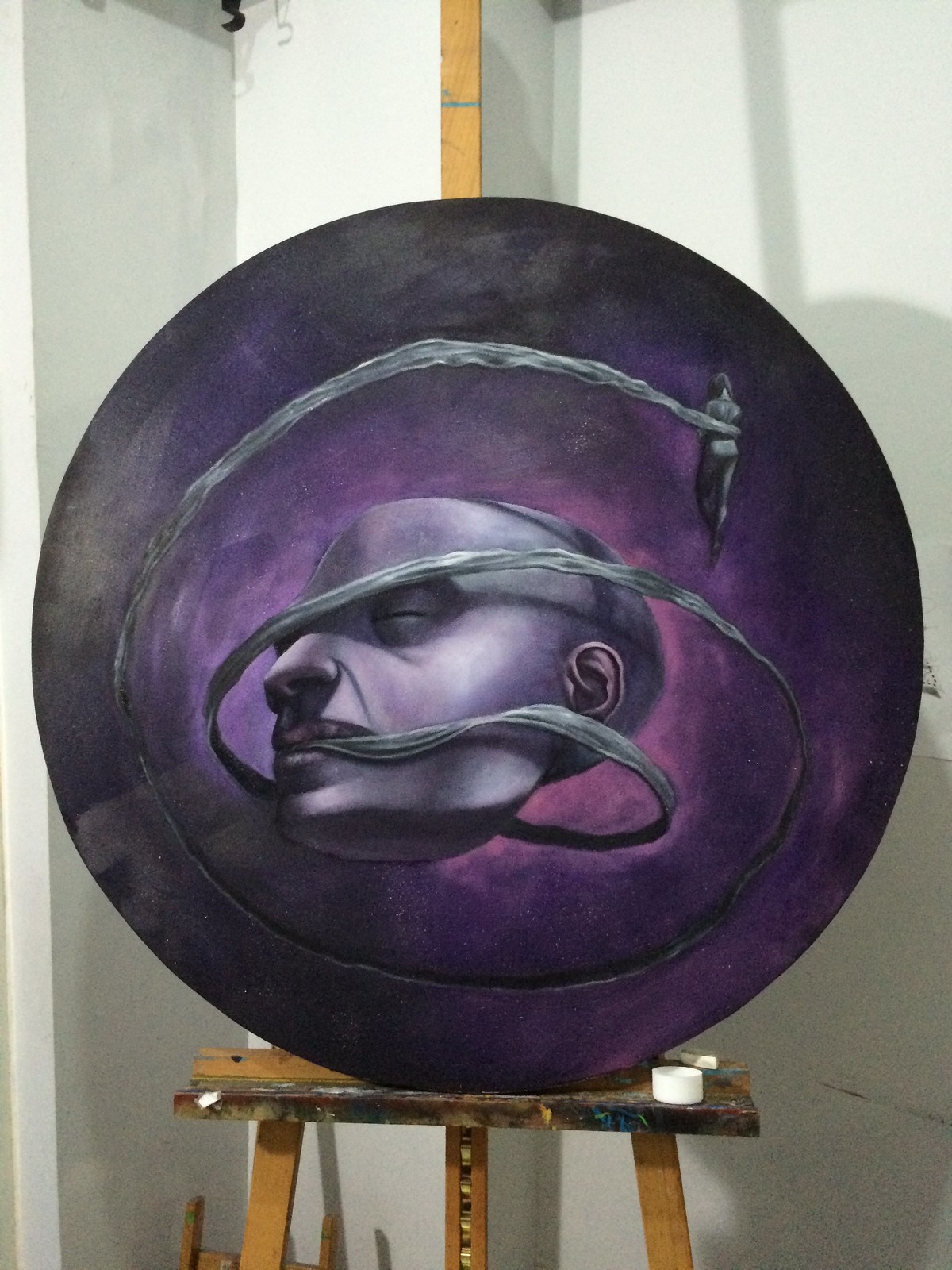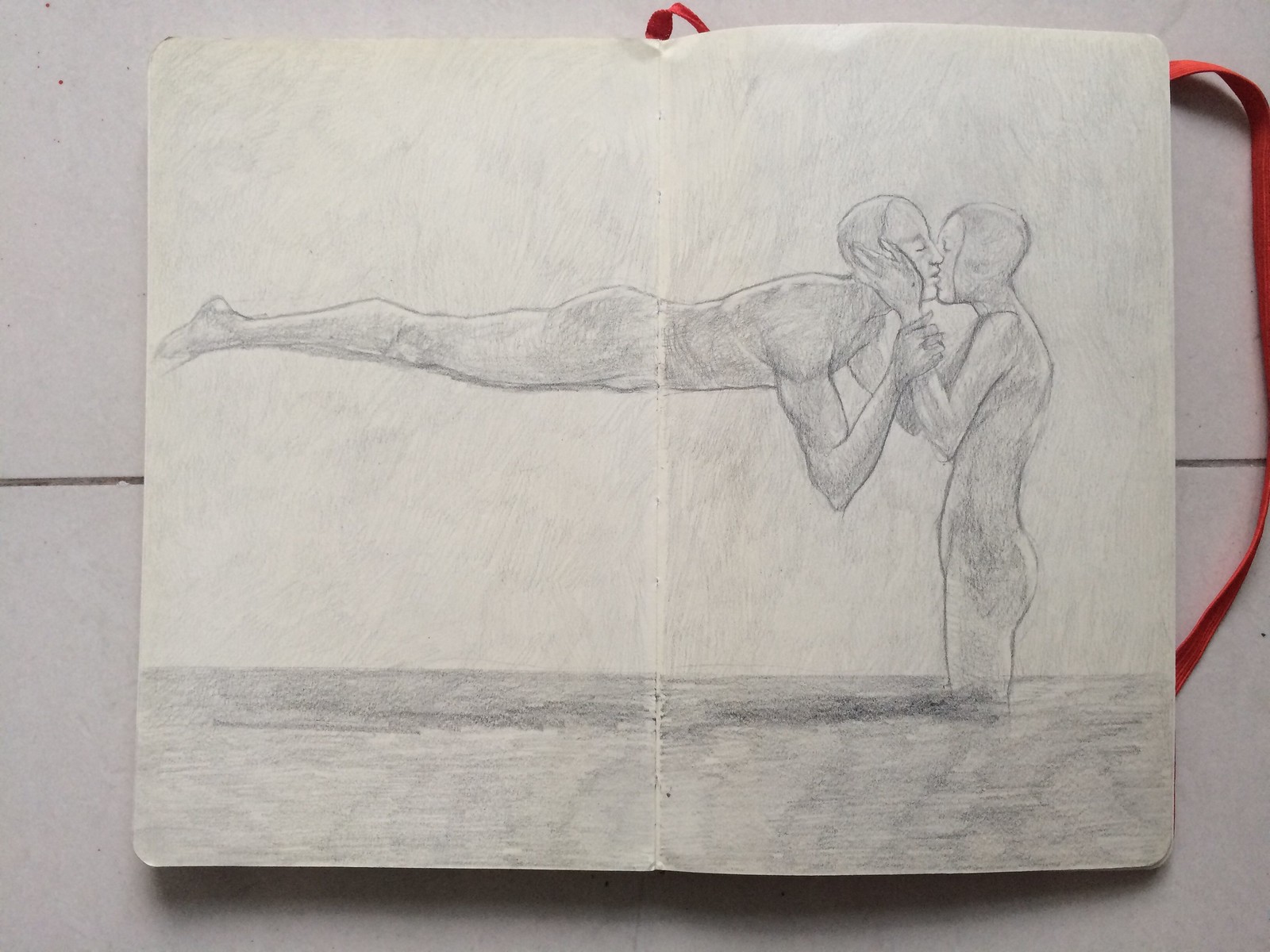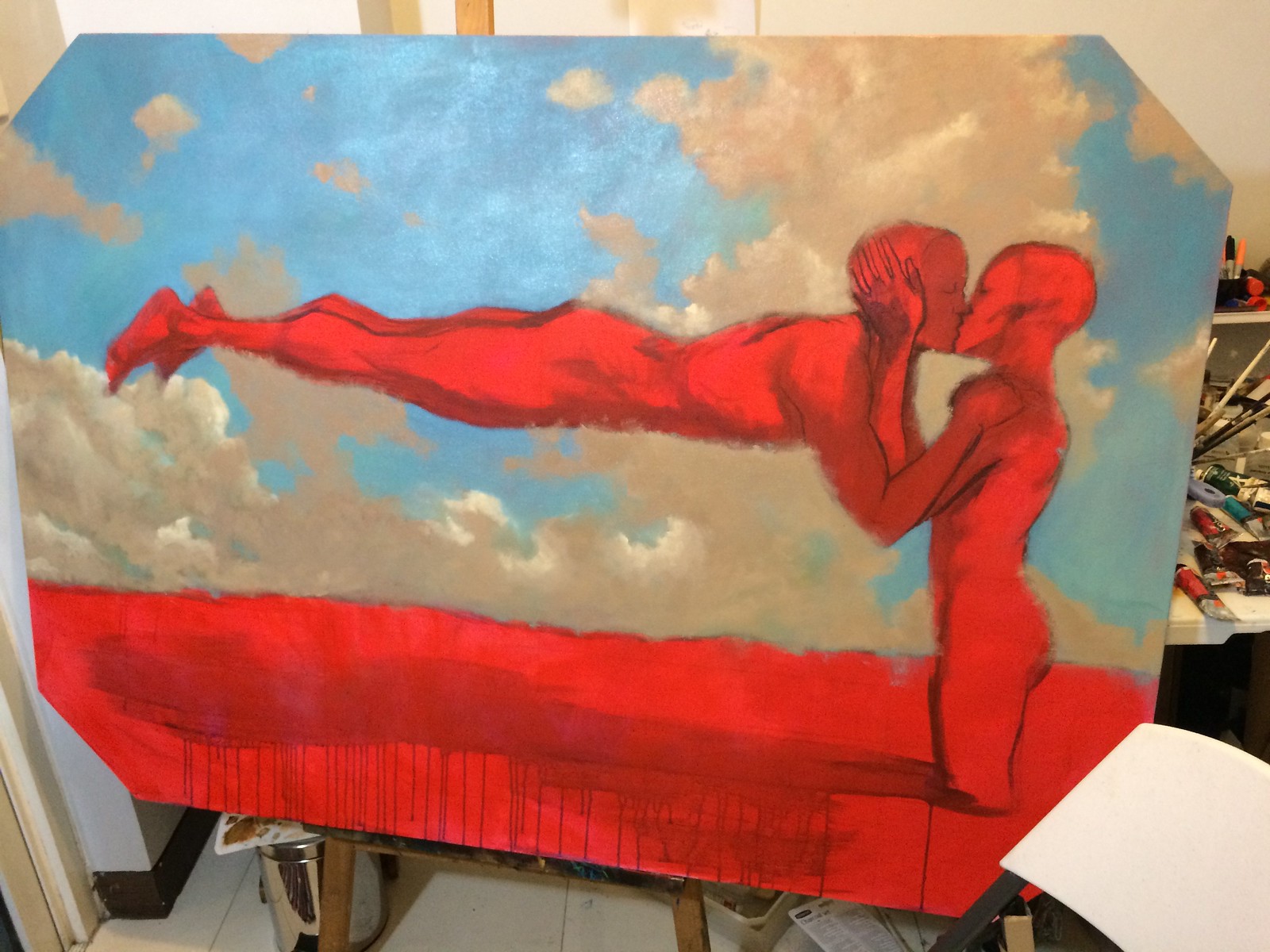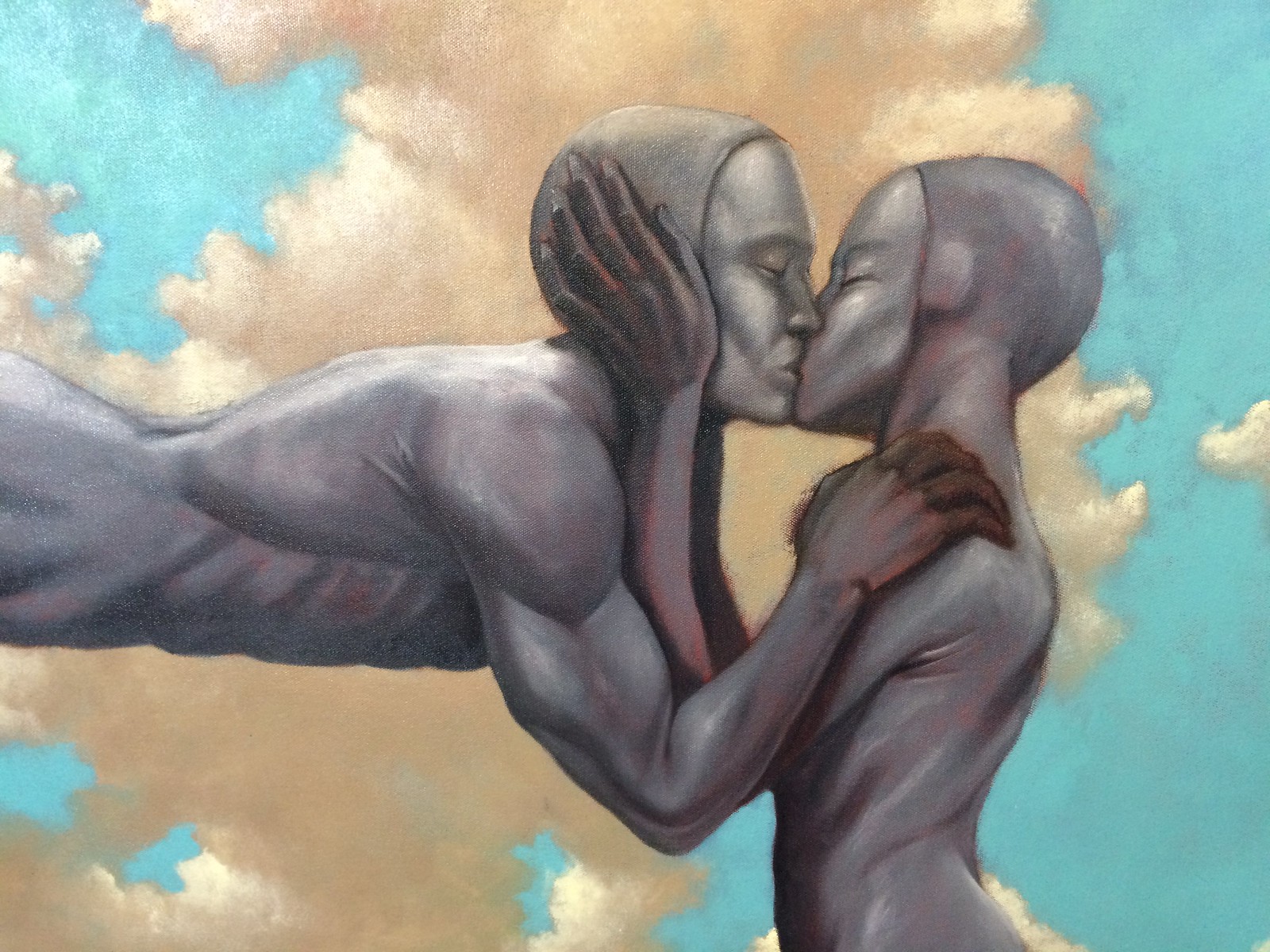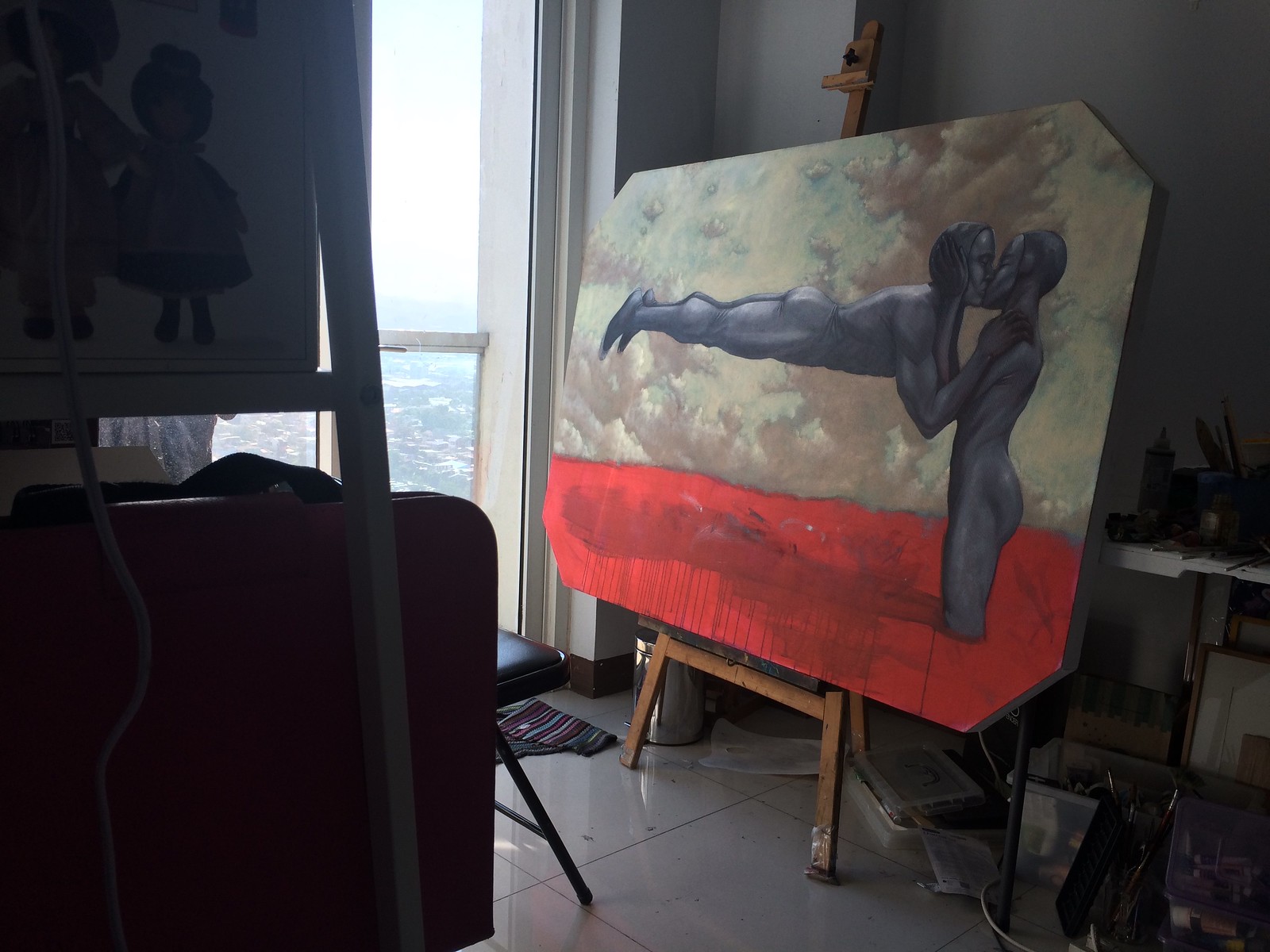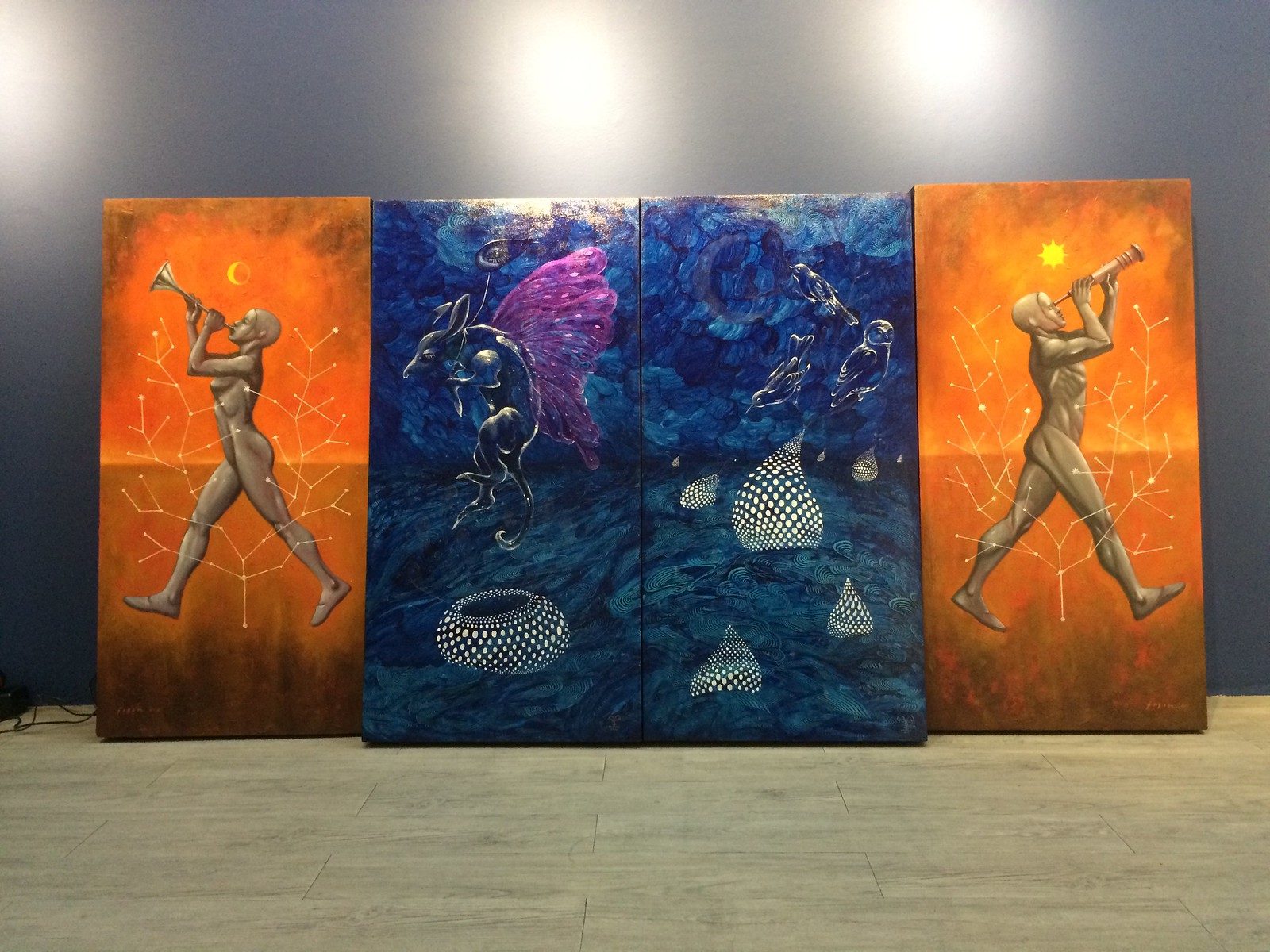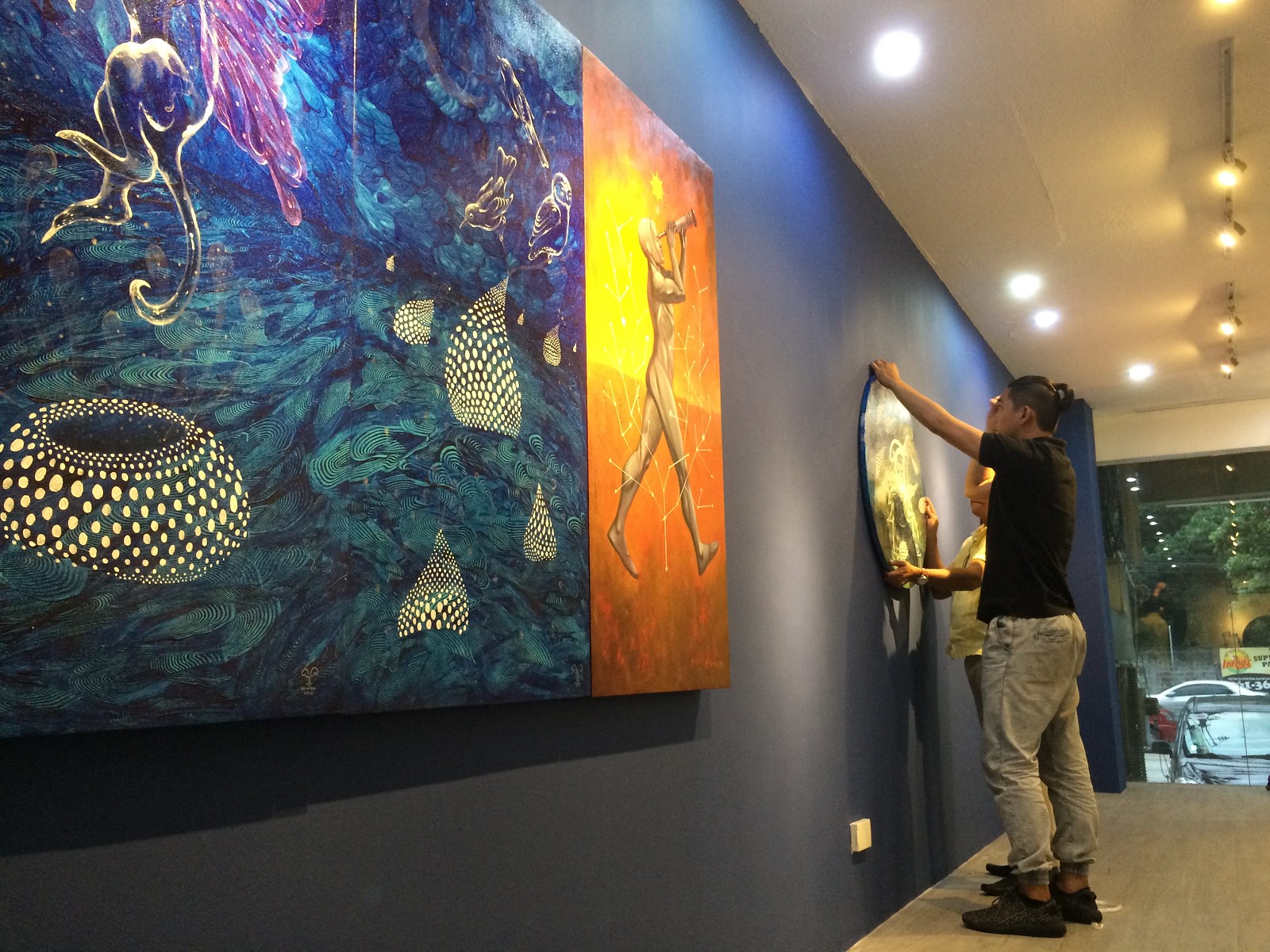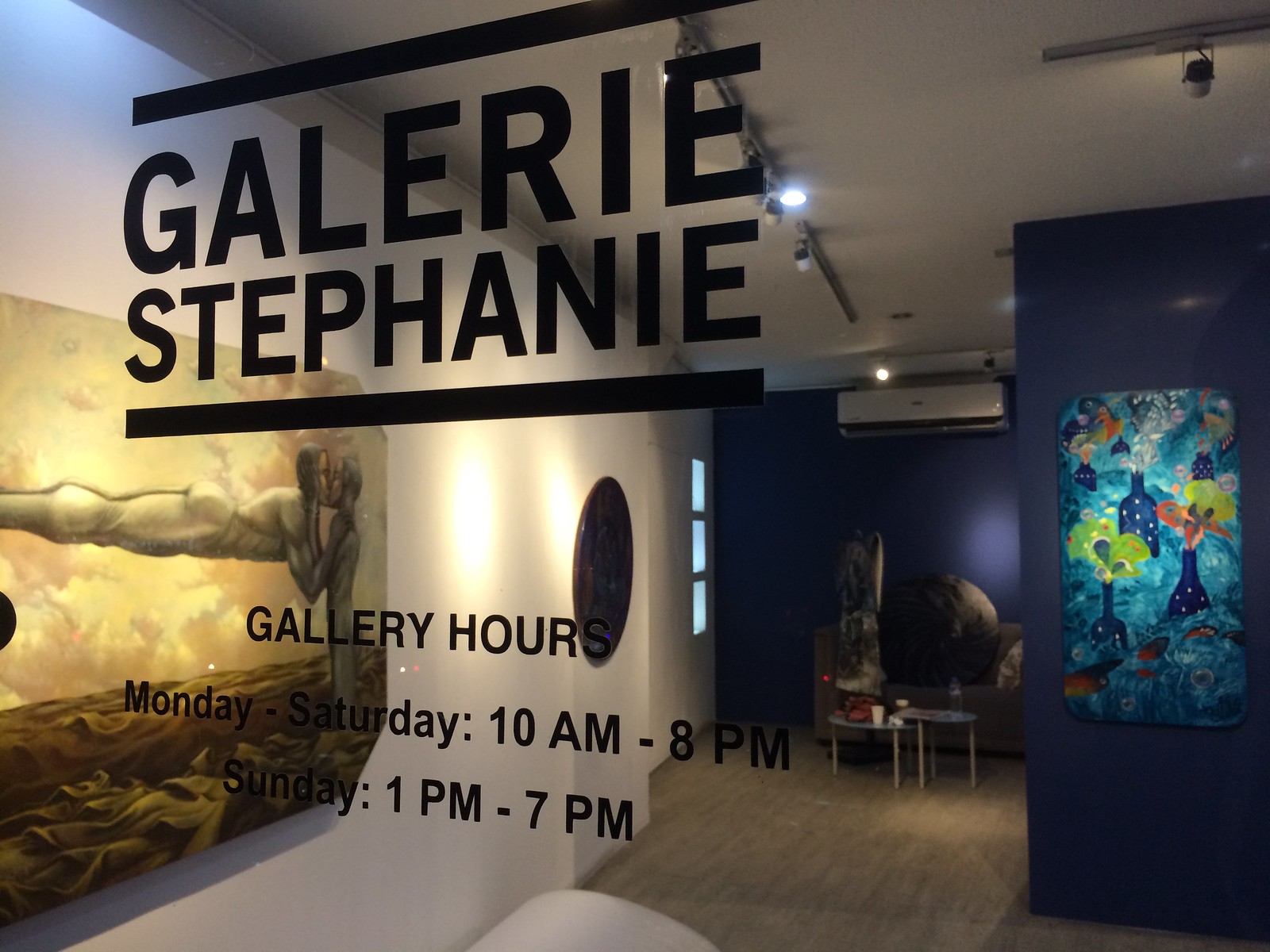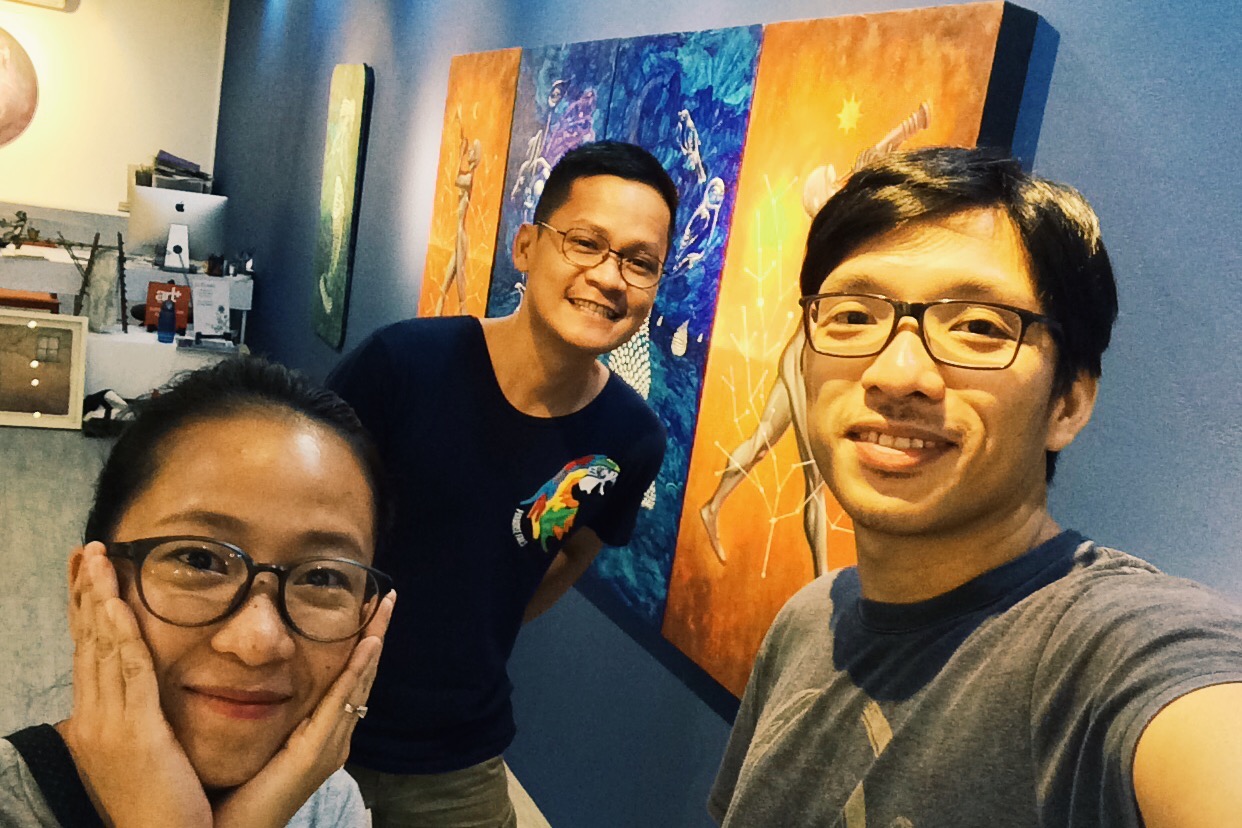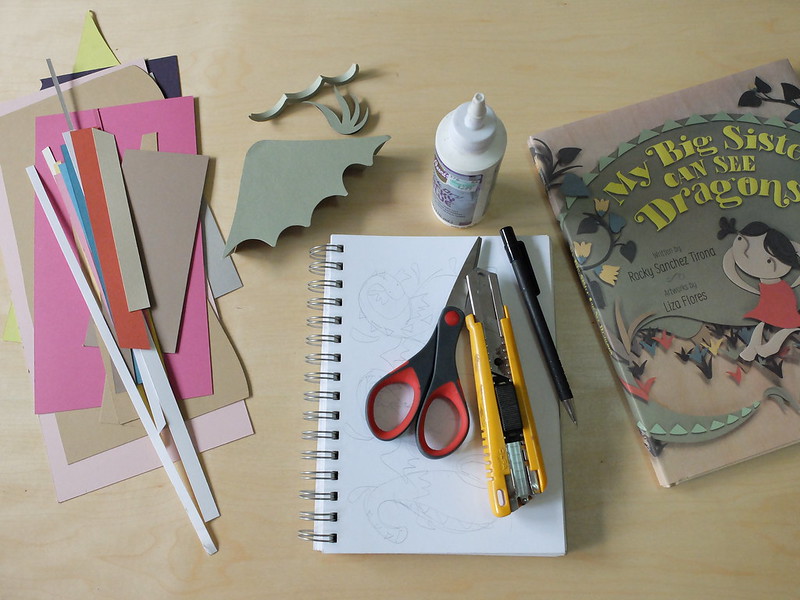“String theory envisions a multiverse in which our universe is one slice of bread in a big cosmic loaf. The other slices would be displaced from ours in some extra dimension of space.”
– Brian Greene
“If a coin comes down heads, that means that the possibility of its coming down tails has collapsed. Until that moment the two possibilities were equal. But on another world, it does come down tails. And when that happens, the two worlds split apart.”
― Philip Pullman, The Golden Compass

Last month, Sergio Bumatay and I had our second two-man show, this time held at Galerie Stephanie. Serj and I admittedly approach things differently, so coming up with a common subject matter was challenging. In the end, we realized that our work and our background in image making ran parallel to each other. Both us are heavily into illustration and visual narratives. In a sense, our bodies of work were like parallel universes to one another.
The Stuff of Science Fiction

I grew up reading science fiction and comic books. Science Fiction (or speculative fiction) has always been a home of weird ideas about the future. But as much as they talk about the next step in human evolution, SF also talks about the present, filtered through the lens of scientific allegory.


Many of the science fiction pulp magazines and comic book stories of the past are populated with characters whose origins stories were borne out of exploding planets and radioactive contaminants. Their covers have their own instantly recognizable visual iconography. In a way, these images are no less rigid than Christian iconography found in altars and religious icons.
Pulsars and Space Jesus
Having grown up Catholic, religious iconography is part of my visual landscape. And these images are not only confined to churches – they’re everywhere from public transportation to fashion. So I guess, that informs a lot of what I do.
In coming up with images for the exhibit, I wanted to use the theme of “parallel universes” to talk about personal relationships filtered through science fiction iconography. In fiction and in art, we can talk about exploring time and space, but in the end, these journeys are about exploring and understanding ourselves and each other.
Mobius
“Identity is an assemblage of constellations.” – Anna Deavere Smith
Black Hole
“Inside a black hole time stops altogether.
Whether or not this theory will ever be proved,
I’m moved to believe this would be the perfect place to love someone.”
– Shane Koyczan, Tomatoes
In my third novel there is an actual black hole that swallows everything you love.
– Jonathan Lethem
Orbit
“Within his orbit, I was nothing but a flat noodle. And I don’t know how much longer I can keep this up.”
– Dee Lestari, Rectoverso
Our Strange Gravities
“Sometimes I think gravity may be death in disguise. Other times I think gravity is love, which is why love’s only demand is that we fall.”
― Shaun David Hutchinson, We Are the Ants
“What is love if not the gravity of souls?”
― Courtney M. Privett, Shards of Chaos
Collaboration
For our collaborative piece, Serj and I worked on a quadtych, sharing a single horizon line.
Shoutout to our curator Ricky Francisco and Galerie Stephanie’s Abby Teotico for helping with the birthing pains of this show. I don’t have a photo of them, so here’s a picture of Sergio and myself, with a cameo appearance by Abi Dayacap.
I am currently represented by Galerie Stephanie. The gallery is located at Unit 1B Parc Plaza Bldg., 183 E. Rodriguez Jr. Ave., Libis, Quezon City. For inquiries, contact the gallery at (02) 709-1488 or at inquiry.galeriestephanie@gmail.com.


